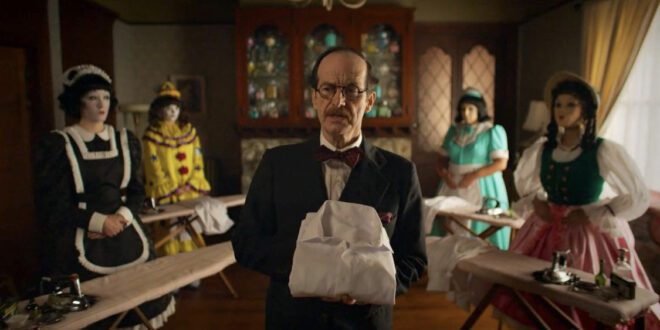“You’ve been kidnapped by a crazy-rich toymaker who’s sick in the head and obsessed with dolls!”
Sounds like the beginning of a disturbing horror story, doesn’t it?
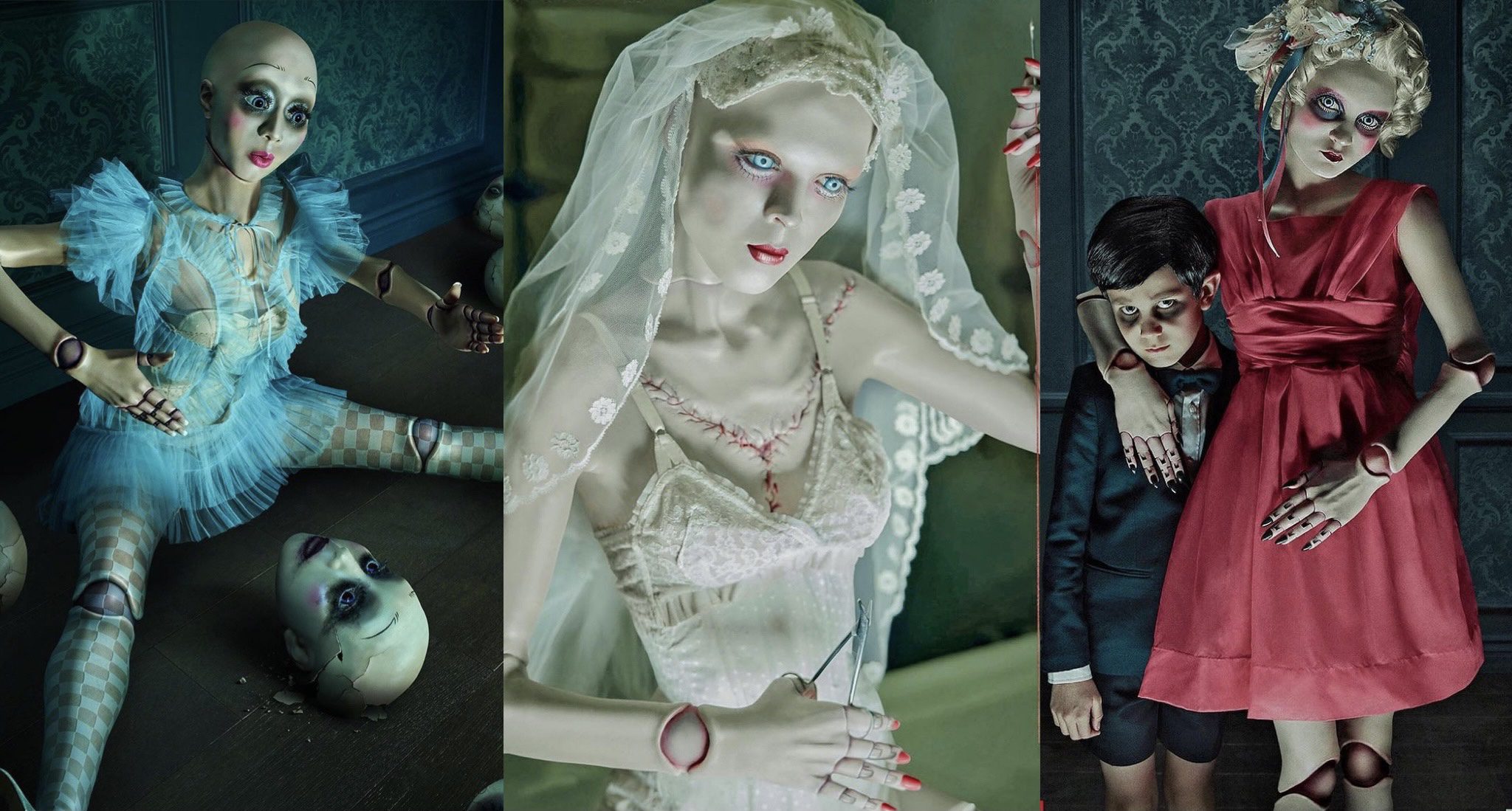
That’s because it is. This is the plot of the first episode of the second season of American Horror Stories titled “Dollhouse,” which premiered on Thursday July 21, 2022.
**Spoilers for American Horror Stories season 2 episode 1, “Dollhouse,” ahead!**
American Horror Stories is an American Horror Story spinoff series that debuted last summer with each episode being its own standalone story, unlike the original show that runs with a singular, central theme for each season. Despite a seemingly simply storyline, “Dollhouse” has enough disquietude, intrigue, and horror to satisfy diehard American Horror Story fans while capturing the imagination of novice watchers.
The episode features AHS anthology actor Denis O’Hare as the central antagonist (AKA the crazy-rich toymaker who’s sick in the head). O’Hare was in season one, Murder House, as the disfigured Larry Harvey, season three, Coven, as the witches’ butler, Spaulding, season four, Freakshow, as the manipulative freak murderer, Richard Spencer/Stanley, season five, Hotel, as the smashing Liz Taylor, season six, Roanoke, as the crazed academic Dr. Elias Cunningham, and season ten, part one, Red Tide, as Provincetown local Holden Vaughn.
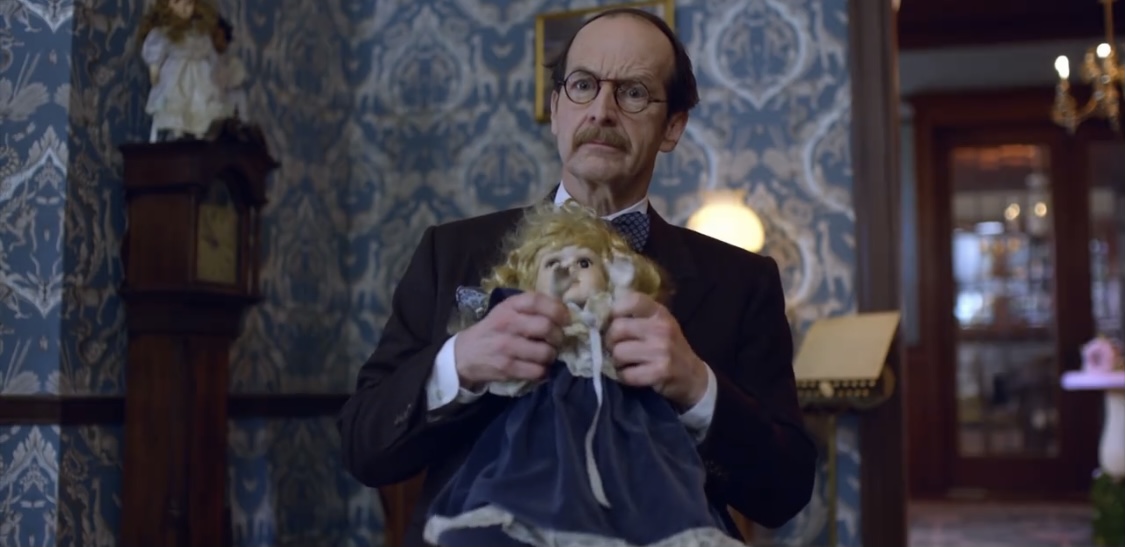
Based in Natchez, Mississippi, in 1961, “Dollhouse” centers around Van Wirt (O’Hare), a southern plutocrat who has made his fortune from manufacturing world renowned baby dolls.
The episode opens in Van Wirt’s office at his doll factory where he is interviewing Coby Dellum (Kristine Froseth) for a secretary position. He is most intrigued by her curriculum vitae, especially since she was high school valedictorian and president of the Natchez Debate Society with a master’s degree from Ole Miss. Yet, despite her impressive accomplishments, he dismisses her right before she is chloroformed by his assistant, Eustice (Matt Lasky).
She awakens inside the private, “Victorian spiced with old Americana and Edwardian” style, full-sized dollhouse built by Van Wirt for his son, Otis (Houston Lowe), who also has an unusual penchant for manikins. Coby is surrounded by decorative wallpaper, brightly colored furniture, and ornate toys of all shapes and sizes. She is accompanied by four motionless life-sized dolls, all dressed in different costumes, including a French maid (Abby Corrigan), a bride (Maryssa Menedez), a soda fountain waitress (Simone Recasner), and Little Bo Peep (Emily Morales-Cabrera).
After Van Wirt leaves, the other dolls come to life and tell her that they’ve all been entered into a special pageant to find the perfect mother for Otis. To win, they must pass a series of tests, including setting a proper dinner table, ironing the perfect shirt, and correctly citing scripture. While Van Wirt and his son are in the house, they all must adorn a doll costume of their choosing while remaining still and silent unless spoken to. Those who fail to pass his tests “get eliminated in the worst way” such as being thrown in a well or brutally stabbed to death.
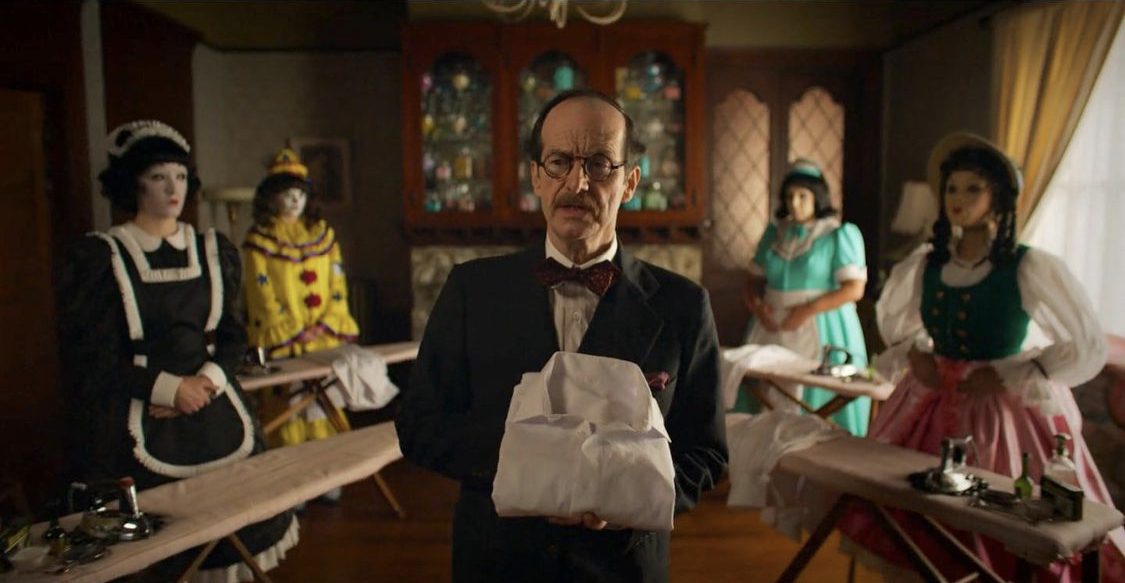
Van Wirt is a man of God, as deduced from his in his opening sermon to Coby in which he poetically pontificates on the holiness and purity of dolls:
“What is a doll, really? Mankind’s attempt to finish what the Almighty began… when the Lord formed dust into man, he was seeking perfection…Well, a doll does not sin. It has no flesh to mortify. No soul to lose. It’s God’s ideal made manifest.”
Van Wirt is obviously projecting his insecurities upon Coby, attempting to reinforce and justify his plan to design the perfect mother for his son by turning her into a doll. Van Wirt had been married before, found his wife cheating on him, and subsequently had her and her lover thrown down a well. In a way, Van Wirt sees himself as God and his “ideal made manifest” is the living, breathing doll he would eventually create for his son from one of the young women he holds captive in his dollhouse.
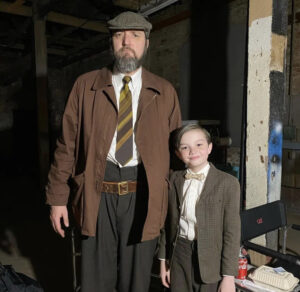
Van Wirt’s son is a young, polished yet spoiled child who takes a liking to Coby and her chosen clown costume, albeit reluctantly at first. She performs a special magic trick by making a toy truck move by itself which intrigues him. As Coby and Otis share an organic connection, bonding over what it feels like to be different, she genuinely confesses she will be the best mommy to him if he asks his father to set the other girls free. Otis falls short of this request and so the girls are subject to one final test.
Before the test is carried out, the girls hatch a plan to trick Van Wirt to escape the dollhouse by setting up mannequins in their outfits to distract him as Coby uses her special magic trick to unlock the front door. As the remaining girls attempt to flee, Coby heroically attempts to take Otis with her but is ultimately cattle prodded and taken to Van Wirt’s doll factory. Here, she is strapped into an oversized doll mold and encased completely in porcelain, entombing her body inside. She is made into Otis’ favorite doll, complete with long, blond locks, rosy cheeks, and a pink and white patterned dress.
While it seems like the end rests with Coby forever entombed in porcelain and serving the Van Wirts, two women walk into the room, donning the long, black, hooded robes we’ve seen before in the American Horror Story universe. They are obviously the same kind of witches from Coven and remark to Coby that she is “one of us” and her spells were almost too weak for them to detect.
After setting fire to Van Wirt and his dollhouse, Coby leaves with the witches and Otis in hand to arrive later at the one and only Miss Robichaux’s Academy for Exceptional Young Women in New Orleans. Upon arriving, Coby asks if he has a middle name that he can use in place of Otis, to which he responds, “Spaulding,” the same name of O’Hare’s character from Coven (cue the squealing of American Horror Story fans, including myself, in excitement for this brilliant connection). Upon receiving his new name, a little girl with brilliant, long, crimped, red hair runs down the steps of the house to him, introducing herself as Myrtle Snow (Ellie Grace Pomeroy) and remarking how nice it is to have someone her own age there.
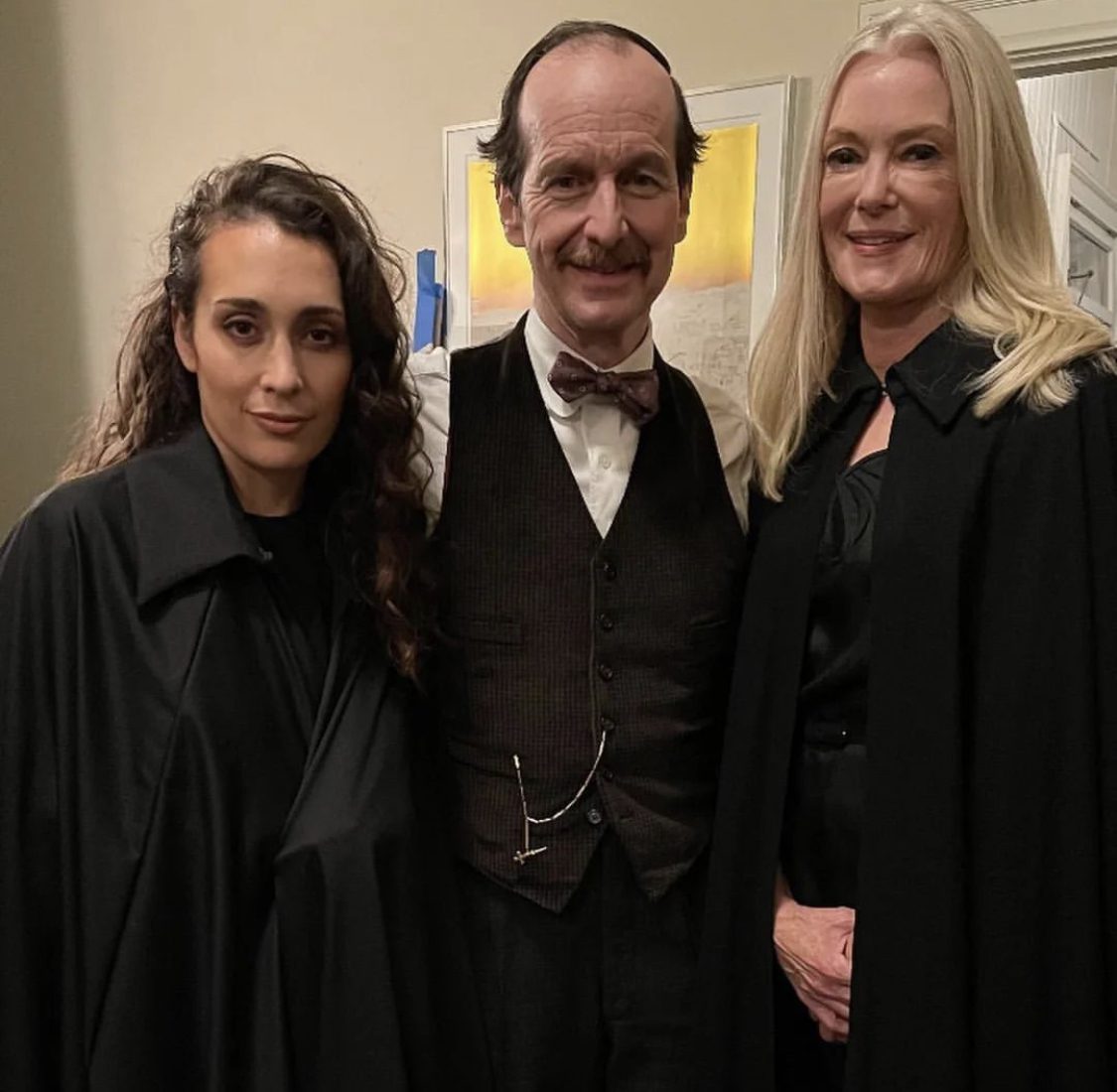
The final ending brings up the question of the timeline for Coven. After investigating the dates of some of the historical moments from the season, I’ve deduced that the age when Spaulding arrived at Miss Robichaux’s is fairly accurate and believable. Despite him always appearing haggard and gaunt as an adult in AHS’s third season, he and Myrtle were no doubt around the same age when they first met. In Coven, we see how his raggedy butler suits and long greasy hair severely contrast with Myrtle’s fiery red locks and ostentatious fashion, making him seem much older than what he probably was. Looking back on season three, we know that Myrtle attended the school with Fiona Goode (Jessica Lange) who would end up becoming the Supreme for over forty years. In 1971, Fiona was 17 years old when she killed Anna Leigh Leighton, the Supreme at the time. If Myrtle was the same age as Fiona in 1971, that would place her around seven years old when she first meets young Spaulding in 1961.
Before “Dollhouse’s” intimate look into his ominous past, Spaulding’s family history at Miss Robichaux’s had also been questioned by fans. In one of the later episodes of Coven, Spaulding mentions how he and his family had been serving the witches for generations. However, after “Dollhouse,” we know this is not true. Upon arriving at Miss Robichaux’s at the end of the episode, Coby tells him, “If anyone asks, you’ve been here your entire life just like your father before you and his father before him.” After fifty plus years serving the witches, Spaulding held true to this story, perhaps using it to suppress the traumatic experience of watching his father turn women into dolls.
In addition to several other homages to previous seasons of American Horror Story, such as Coby’s clown costume (clowns have been featured in season four, Freakshow, as well as season seven, Cult), as well as Eustace’s missing tongue (foreshadowing Spaulding’s fate of cutting out his own tongue), I noticed a peculiar parallel relating to another witch from Coven.
Halfway through “Dollhouse,” in a one-on-one with Otis, Coby confesses to him how she’s had her gift (being able to move objects with her mind) since she “stopped being a little girl,” but that she was afraid of what her family would do if they found out since “they could decide I had a demon or something, have a preacher yell over me.” She ultimately chose to leave home because “the place where I came from, there were a lot of rules about what was right and what was wrong, and how to live and how not to live.”
Although she never discloses where she is originally from, this isn’t the first time we’ve heard about a young witch leaving home in fear of religious persecution. In Coven, swamp witch Misty Day once belonged to a Pentecostal community who burned her alive at the stake because of her power of resurgence. Pentecostals are known for their extreme worship methods and beliefs, and Coby very well could have come from a similar religious family despite there being no witch-fearing backwoods zealots in the south at the time.
As an avid, somewhat obsessive American Horror Story fan myself, I can tell you that this episode was a most refreshing connection to the old-school seasons that breathed life into the entire new season of Stories. Although I didn’t mind the first season of Stories, many fans I’ve interacted with on fandom socials had mixed, if not heavily critical, opinions about it. “Dollhouse” definitely left fans with a renewed sense of enthusiasm for the future of Stories, as bridging a fan-favorite season like Coven to the storyline was a delectable treat from directors Ryan Murphy and Brad Falchuk.
 PopHorror Let's Get Scared
PopHorror Let's Get Scared
